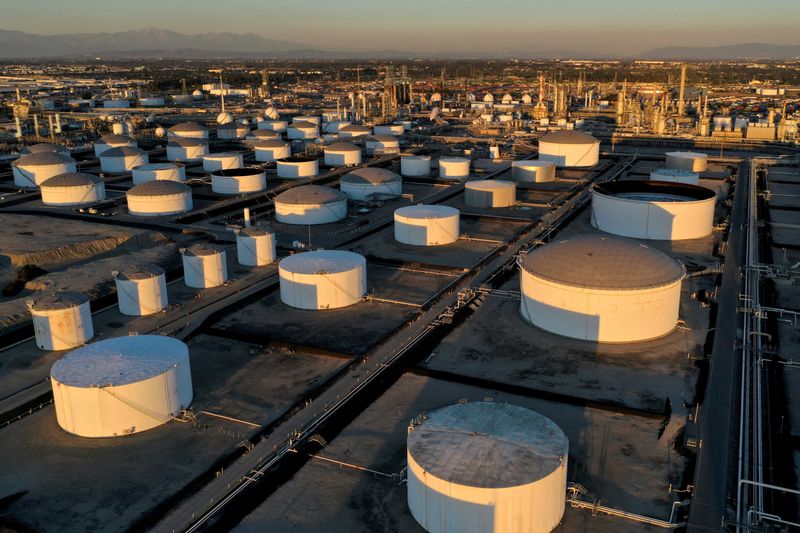By Nicole Jao
NEW YORK (Reuters) – Canada’s Trans Mountain (TMX) oil pipeline, which began commercial operations in May, has so far had little impact on crude costs at refineries on the West Coast, according to companies operating there USA
The expansion, which tripled pipeline capacity from Alberta to Canada’s Pacific coast to 890,000 barrels per day (bpd), increased access to Canadian heavy crude to west coast refineries and opened a new route to Asia.
Refineries on the US West Coast, which import crude oil mainly by ship, are expected to be among the main outlets for the Canadian barrels.
However, in the first three months since TMX’s inception, most TMX barrels have been exported to markets in Asia, said Brian Mandell, executive vice president of marketing and commercial for Phillips 66 (NYSE:).
“About two-thirds of the additional TMX barrels went to Asia, which was a bit of a surprise to us,” Mandell said on a call with investors last month.
The Houston-based refiner said in April that access to cheaper heavy barrels from Canada would help boost profits at its West Coast refining operations in both California and Washington.
Independent refiners are struggling with weaker than expected fuel demand, which squeezed margins in the second quarter.
Phillips 66’s realized margins fell to $10.01 per barrel from $15.32 a year earlier. Marathon Petroleum (NYSE:) refining margins for the second quarter came in at $17.37 per barrel, compared to $22.10 per barrel a year ago. Valero Energy (NYSE:) said refining margins were down nearly 28% from last year.
Given that shipping barrels to Asia is logistically more complicated and expensive compared to the readily available U.S. market, many investors believed the majority of TMX crude would head to the West Coast first, Scotiabank analyst Paul Cheng said in an interview.
“But it turned out that wasn’t what happened,” he added.
The assumption was that the new flow of crude would displace heavy oil imported from Latin America or the Middle East to the West Coast and allow refineries there to save on shipping costs, Cheng noted.
Many analysts had predicted that the gap on Western Canada Select (WCS) would gradually narrow due to the additional export capacity provided by TMX. But the pipeline’s spare capacity failed to lift Canadian crude oil prices in its first three months.
The Marathon refinery in Los Angeles, the largest on the West Coast with a capacity of 365,000 barrels per day, would be one of the main destinations for TMX’s heavy sour crude.
Other west coast facilities including Valero’s Benicia refinery and Chevron (NYSE:)’s El Segundo refinery also takes TMX crude.
According to the Energy Information Administration (EIA), the US West Coast has a capacity of approximately 2.5 million barrels per day.
ANS UNDER PRESSURE
Refineries could see crude oil costs fall in coming months as the incremental Canadian heavy barrels compete with Alaskan North Slope (ANS) and other crudes widely used by West Coast refineries, executives said.
“What is important and very helpful to us is that as these incremental Canadian barrels have come to market, there has been pressure on the ANS barrels,” said Rick Hessling, Marathon’s Chief Commercial Officer.
Average ANS prices fell to $85 per barrel from around $90 in April, according to General Index data.
Lower ANS prices are expected to lower crude costs for West Coast refineries, said Gary Simmons, chief operating officer at Valero.

ANS and other crudes will continue to be part of the West Coast refinery as refiners are still testing whether using Canadian heavy sour crude will cause problems or inefficiencies in their refining systems down the line.
“If you test that quality, over time you will see what type of natural oils to use to blend (with Canadian heavy crude) so that you get the best yield in your configuration,” says Scotiabank’s Cheng. “That process will take months.”





















